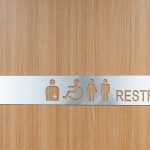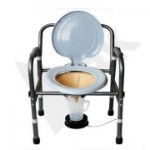Urinary Incontinence and Its Types
Urinary incontinence is when you lose voluntary control of the urinary bladder and pass some urine involuntarily. It is an embarrassing condition that affects the quality of your life. Urinary incontinence not only has physical implications, but also affects your social life. There are many types of this condition with different underlying causes. Let’s have a look in to them.
Types of Urinary Incontinence
Urinary incontinence has been divided in to different types based on the etiology and symptoms. Here are the main types of this condition.
- Stress incontinence
- Urge incontinence
- Overflow incontinence
- Functional incontinence
- Mixed Incontinence
What are the Symptoms of Urinary Incontinence?
Following symptoms can be experienced in different types of incontinence.
- Stress incontinence is characterized by urinary leakage when some pressure is put on your bladder. It happens during coughing, sneezing, laughing and lifting a heavy weight.
- Urge incontinence causes a sudden urge to urinate that you cannot control and pass some urine involuntarily. It also causes increased frequency of urination, i.e. you have to run to toilet again and again. You have to wake up at night multiple times to pass urine.
- Overflow incontinence is when your urine overflows due to an overfilled bladder. You may experience urinary dribbling all the time.
- Functional incontinence is when your urine leaks because of the delay in bladder emptying. This condition only presents with urinary leakage.
- Mixed Incontinence, as the name indicates, presents with the symptoms of more than one type of incontinence.
What is the Cause of Urinary Incontinence?
Every type of incontinence has a different causative factor.
- Stress incontinence is due to weakened pelvic muscles and sphincters that usually prevent urinary leakage. When the pressure increases, weakened structures cannot hold urine and it leaks.
- Urge incontinence is also called overactive bladder. It is caused by a range of factors that increase bladder activity. This can be due to a bladder infection or a neurologic factor increasing the frequency and intensity of contraction of bladder muscles.
- Overflow incontinence is due to incomplete emptying of the bladder. This incomplete emptying can be caused by tumor, stones, or any other mass or kink in the urethra. When the bladder is not emptied completely it overflows.
- Functional incontinence is not due to any bladder pathology. It is experienced when some physical or mental disability keeps patient from reaching toilet in time. Due to delay patient develops urinary leakage.
- Mixed incontinence is when there are multiple reasons that are causing involuntary passage of urine. The patient may have an overactive bladder and weak pelvic muscles at a time leading to mixed incontinence.
How Does Your Doctor Diagnose This Condition?
Your doctor asks you questions about your symptoms and takes a complete history. After that, a physical examination is carried out to assess the condition. Your urine test is performed to rule out any infection. A bladder diary is helpful to record details like water intake, urinary frequency, and incontinence episodes. It helps your doctor assess and decide the type of incontinence you are experiencing.
Post-void residual urine volume is measured as a part of urodynamic studies. It helps diagnose overflow incontinence especially. In urodynamic studies, bladder pressure is also measured in order to diagnose stress and urge incontinence. Your doctor may also order some imaging tests like ultrasound.
How is Urinary Incontinence Treated?
The treatment of incontinence includes lifestyle changes, medical options, and surgical options.
Lifestyle Changes
- If a patient is overweight, weight loss is advised.
- Pelvic floor exercises are recommended to increase the strength of pelvic floor muscles. It helps with stress incontinence.
- Avoiding alcohol, caffeine, and other dietary items that increase the frequency of urine is important.
- Cutting down on liquid intake also eases the symptoms.
- Bladder training is a method that allows you to hold your urine for some time before you go to toilet. It involves holding urine when you feel an urge to urinate. The holding time is increased until there is about 3 hours gap between urination. It helps with urge incontinence.
- Scheduled toilet trips every few hours ease the symptoms of overflow incontinence.
- Urinating twice with a few minutes between each time helps control overflow incontinence. It is called double voiding.
Medical Options
There are many drugs that are used to control the symptoms of incontinence. Anticholinergic medications and mirabegron are used to treat urge incontinence. Alpha blockers help with overflow incontinence.
In post-menopausal women, incontinence can be due to estrogen deficiency. In such cases, topical estrogen is applied.
Moreover, a bulking material is injected in urethra to overcome stress incontinence. Botulinum toxin injections in bladder deal with the overactivity of the bladder.
Surgical Options
There are different surgical procedures that are carried out to treat involuntary urinary leakage. They are employed if lifestyle changes and medical options fail. These include sling procedure, bladder neck suspension surgery, and placing an artificial urinary sphincter.







